- Region
- Águilas
- Alhama de Murcia
- Jumilla
- Lorca
- Los Alcázares
- Mazarrón
- San Javier
-
ALL AREAS & TOWNS
- AREAS
- SOUTH WEST
- MAR MENOR
- MURCIA CITY & CENTRAL
- NORTH & NORTH WEST
- TOWNS
- Abanilla
- Abarán
- Aguilas
- Alamillo
- Alcantarilla
- Aledo
- Alhama de Murcia
- Archena
- Balsicas
- Blanca
- Bolnuevo
- Bullas
- Cañadas del Romero
- Cabo de Palos
- Calasparra
- Camping Bolnuevo
- Campo De Ricote
- Camposol
- Canada De La Lena
- Caravaca de la Cruz
- Cartagena
- Cehegin
- Ceuti
- Cieza
- Condado de Alhama
- Corvera
- Costa Cálida
- Cuevas De Almanzora
- Cuevas de Reyllo
- El Carmoli
- El Mojon
- El Molino (Puerto Lumbreras)
- El Pareton / Cantareros
- El Raso
- El Valle Golf Resort
- Fortuna
- Fuente Alamo
- Hacienda del Alamo Golf Resort
- Hacienda Riquelme Golf Resort
- Isla Plana
- Islas Menores & Mar de Cristal
- Jumilla
- La Azohia
- La Charca
- La Manga Club
- La Manga del Mar Menor
- La Pinilla
- La Puebla
- La Torre
- La Torre Golf Resort
- La Unión
- Las Palas
- Las Ramblas
- Las Ramblas Golf
- Las Torres de Cotillas
- Leiva
- Librilla
- Lo Pagan
- Lo Santiago
- Lorca
- Lorquí
- Los Alcázares
- Los Balcones
- Los Belones
- Los Canovas
- Los Nietos
- Los Perez (Tallante)
- Los Urrutias
- Los Ventorrillos
- Mar De Cristal
- Mar Menor
- Mar Menor Golf Resort
- Mazarrón
- Mazarrón Country Club
- Molina de Segura
- Moratalla
- Mula
- Murcia City
- Murcia Property
- Pareton
- Peraleja Golf Resort
- Perin
- Pilar de la Horadada
- Pinar de Campoverde
- Pinoso
- Playa Honda
- Playa Honda / Playa Paraíso
- Pliego
- Portmán
- Pozo Estrecho
- Puerto de Mazarrón
- Puerto Lumbreras
- Puntas De Calnegre
- Region of Murcia
- Ricote
- Roda Golf Resort
- Roldan
- Roldan and Lo Ferro
- San Javier
- San Pedro del Pinatar
- Santiago de la Ribera
- Sierra Espuña
- Sucina
- Tallante
- Terrazas de la Torre Golf Resort
- Torre Pacheco
- Totana
- What's On Weekly Bulletin
- Yecla


- EDITIONS:
 Spanish News Today
Spanish News Today
 Alicante Today
Alicante Today
 Andalucia Today
Andalucia Today
article_detail
Spanish News Today Editors Roundup Weekly Bulletin Feb 2
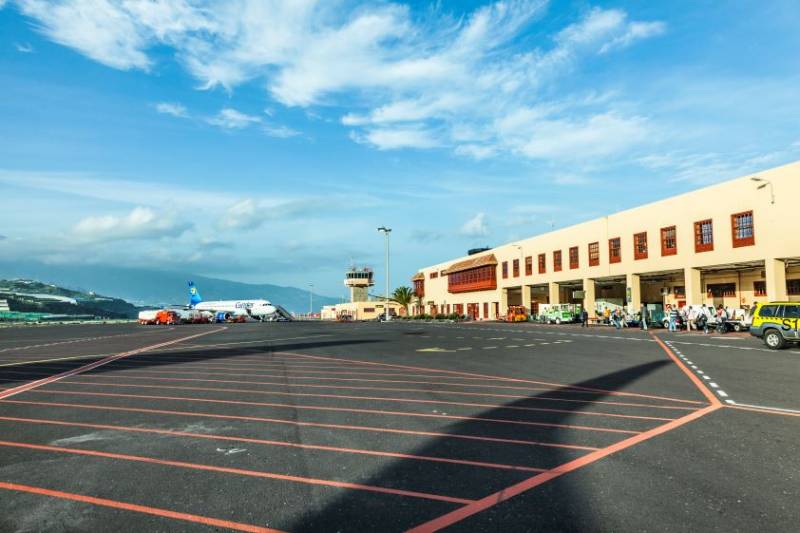
FEATURED ARTICLES: "Extra flight destinations coming for smaller Spanish airports?" and "Why Brits in Spain are having problems watching BBC and ITV"
As we enter into February, typically the coldest month of the year, various parts of Spain are gearing up for droughts this summer. The region of Catalonia has declared a state of emergency amid its worst drought in history and Andalucía has pledged to plunge another 200 million euros into its water infrastructure. Places like Asturias, Galicia and Cantabria are alright, of course, but do you think the rest of us will get any rain soon?
Our main stories this week, though, are about another U-turn on Covid rules and some news about television and travel which is already – or could soon be – affecting expats in Spain.
Let’s begin.
Behind the mask

The never-ending face mask saga has entered a new chapter this week as the Ministries of Health of several regions have deemed that face coverings are no longer necessary in hospitals or health centres.
The former Covid safety measure was reintroduced on January 5 following a huge spike in respiratory illnesses, particularly flu, but the epidemic has now reached its peak in the Valencian Community and in the Region of Murcia, and the health situation is stabilising.
When it was first reintroduced, it was a nationwide rule imposed from the central government in Madrid, but they added the proviso that individual autonomous communities could choose to get rid of the mandatory use of the mask if they registered two consecutive weeks of declines in the incidence of acute respiratory infections.
And that’s exactly what has happened in Valencia and Murcia. Cases in Valencia currently stand at 830 per 100,000 inhabitants, a big drop from the 1,501 registered during the first week of the year. In Murcia, the incidence rate of flu fell by 51% last week and the incidence rate of Covid fell by 42%.
However, health authorities have emphasised that individual clinics and hospitals retain the autonomy to establish their own guidelines and may require masks if deemed necessary for their facilities. Masks are still especially recommended for patients and visitors in the Emergency Room, ICU or Oncology departments.
In addition, the vaccination drive against Covid and flu continues in these communities, and individuals can avail themselves of the jab at any health centre without prior appointment.
ITV in Spain
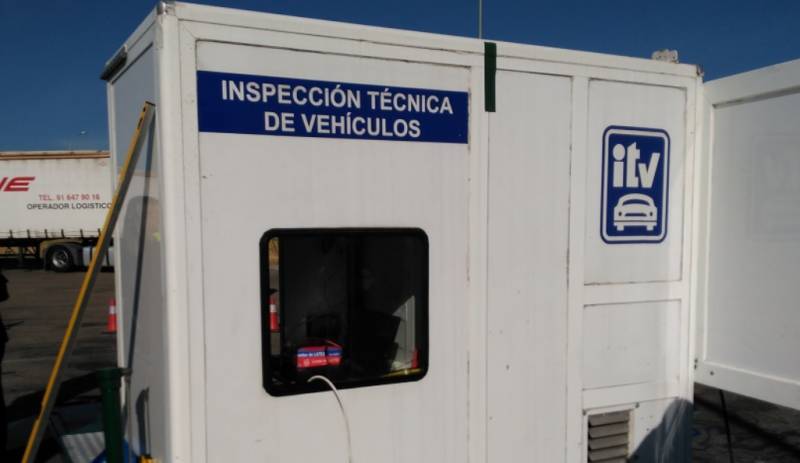
No, not that kind. Here we’re not talking about car type of ITV, but rather the British television channel.
Do you watch UK TV while you’re in Spain? A lot of Brits in Spain do. It’s a good way to keep a handle on events back home and feels a sight more palatable than most Spanish television programmes.
Well, you may have noticed some problems with your BBC and ITV channels recently. A lot of people have reported experiencing disruption to all ITV and BBC channels, and that they keep dropping out and are unavailable to watch.
Don’t worry, it’s not your Spanish television provider playing up. It’s the channels themselves who are to blame. That’s because both the BBC and ITV are in the process of closing their Standard Definition (SD) broadcasts and replacing them all with High Definition (HD).
The BBC closed all the SD versions of its TV channels on satellite on January 8 and ITV is shutting down its SD channels between January and February. As soon as all work is finished, all you have to do is retune your TV and you’ll be able to view the HD channels permanently.
The march of progress, eh?
Catch a waive
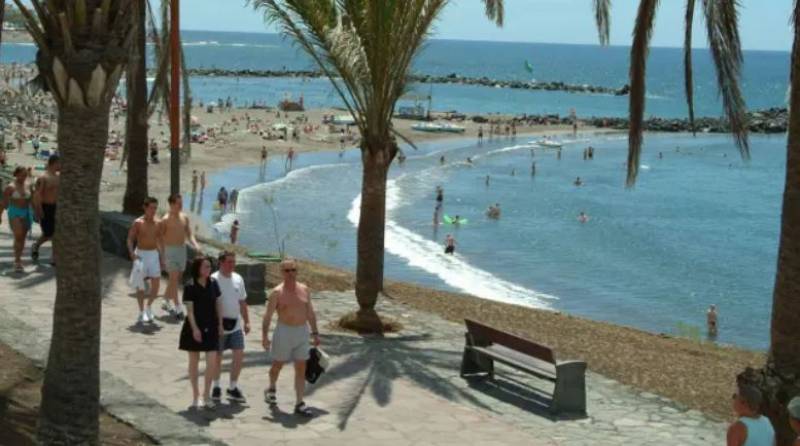
Possibly some good news for anyone who lives near or frequently flies out of any of Spain’s smaller airports – those that had fewer than 3 million passengers in 2023 – as the Aena, the Spanish airport management company, has agreed to waive passenger fees on any travellers over and above the number they got in the last year.
You see, the passenger fees which airlines have to pay for each and every person who flies with them are going up this year. Between 2015 and 2023, the rates dropped nominally by 11%, even as inflation has been 21% in that same period, so Aena thinks it’s time to raise them. It’ll be an average of 40 cents more per passenger, but will still be below 2019, pre-pandemic levels.
Anyway, some airlines (*ahem* Ryanair *ahem*) were grumbling about it and saying they would take their attractive billions elsewhere if that were the case, thank you very much. In response, Aena said fine, tell you what, how about if you don’t have to pay the fees at any of Spain’s smaller airports if you get more people coming through the door than there were in 2023? Not only that, but it applies not only to this year but for the next three years.
As an example, let’s take our old favourite, the Region of Murcia International Airport in Corvera. In 2023, total passenger numbers for this airport stood at 877,796. Under the new rules, from the 877,797th passenger onwards, even if it’s in 2026, Ryanair, easyJet and the like will not have to pay passenger fees.
Pretty sweet deal. The hope is that this fee waiver will incentivise the airlines to bring more flights to those smaller airports in Spain. Which means more flight options for you.
Specifically, the airports this affects are: Asturias, Girona-Costa Brava, La Palma, A Coruña, Seve Ballesteros-Santander, Vigo, Reus, Federico García Lorca Granada-Jaén, Jerez, Aeropuerto Internacional de la Región de Murcia, Almería, Zaragoza, Melilla, San Sebastián, Vitoria, El Hierro, Valladolid, Pamplona, La Gomera, Ceuta, Badajoz, León, Algeciras, Salamanca, Logroño-Agoncillo, Son Bonet, Sabadell, Córdoba, Burgos, Albacete, Madrid-Cuatro Vientos and Huesca-Pyrenees.
Murcia
There aren’t a lot of people who live in the villages and pedanías surrounding the northern Murcia towns of Caravaca de la Cruz, Cehegín, Calasparra, Bullas and Moratalla. They’re normally colder than their coastal counterparts and there aren’t great big expat communities established there.
Still, some like it for the more rural, quiet feel. Those looking for loads of land and great walks are spoilt for choice. What they typically haven’t been spoilt for in the past are quality public transport links to larger urban centres.
Until now. The Region of Murcia government has launched a new public transport scheme that will allow the people living in 26 separate rural areas around here to travel to their main, local town centre whenever they wish.
 It’s a sort of on-demand bus service that functions something like a private taxi, only cheaper. Any residents of these 26 villages – only one of which has a population of more than 1,000 people and the smallest of which has just 31 inhabitants – can call the special number for their zone and, as long as they call at least 24 hours in advance, the bus will be waiting to take them to the town centre and back.
It’s a sort of on-demand bus service that functions something like a private taxi, only cheaper. Any residents of these 26 villages – only one of which has a population of more than 1,000 people and the smallest of which has just 31 inhabitants – can call the special number for their zone and, as long as they call at least 24 hours in advance, the bus will be waiting to take them to the town centre and back.Tickets cost just €1.50 per trip – much cheaper than a taxi. To begin with, small 16-seat minibuses will be used, but these could later be replaced by vehicles with greater capacity if there is enough demand. This so-called ‘Ruralbús’ has been hailed (excuse the pun) as a great way to not only improve connectivity for people living in these rural villages, but also to combat depopulation and provide young people with reasons not to move away.
As a matter of fact, the northern and central inland areas of the Region of Murcia have a load of highly recommendable day trips out which tend to get overlooked during the long hot days of summer when everyone is down at the beaches. The regional tourist board (ITREM) has put together a short list of some suggestions for a day out in central and eastern parts of Murcia, including locations that have all the charm and fascination of the beachfront locations on the Mediterranean and the Mar Menor, and perhaps even more so as they take you into the heart of ‘real’ Murcia!
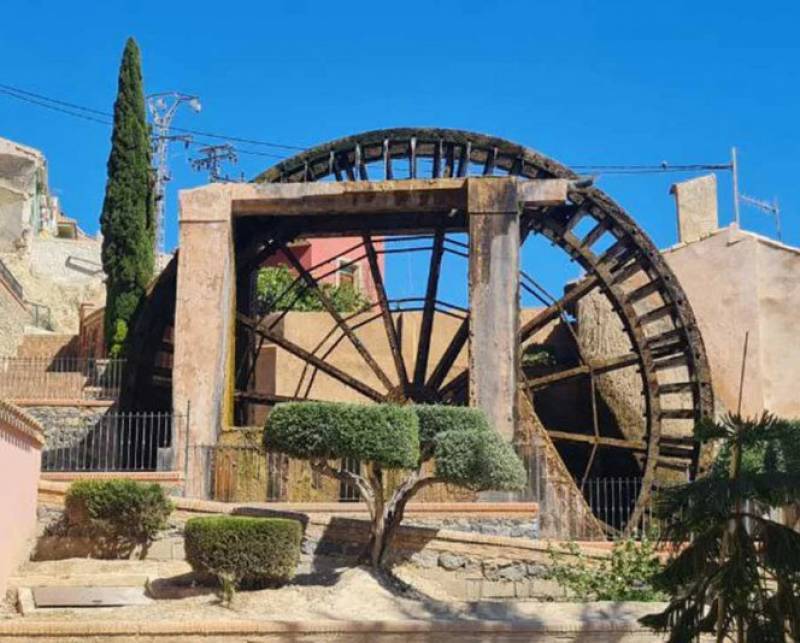 Among the recommendations, if you have never tried them, are Abanilla, a small town with a lot of history to boast, providing insights into the Moorish and Christian past of the Region; Abarán, where you can enjoy some lovely riverside walks through the country, including one to the pretty little riverside beach and a visit to the local ‘Ruta de las Norias’ (Route of the Water Wheels), among which is the largest working structure of this kind in the whole of Europe; and a walk into the Sierra de la Pila following in the footsteps of legendary bandit Jaime ‘El Barbudo’ to his mountain hideaways.
Among the recommendations, if you have never tried them, are Abanilla, a small town with a lot of history to boast, providing insights into the Moorish and Christian past of the Region; Abarán, where you can enjoy some lovely riverside walks through the country, including one to the pretty little riverside beach and a visit to the local ‘Ruta de las Norias’ (Route of the Water Wheels), among which is the largest working structure of this kind in the whole of Europe; and a walk into the Sierra de la Pila following in the footsteps of legendary bandit Jaime ‘El Barbudo’ to his mountain hideaways.Back down to the coast, now, though and we arrive in San Javier, where the Town Hall and the Tourism Department have just announced the return of the Festival Aéreo San Javier, or San Javier Air Show.
With impressive aeronautical acrobatics from the stunt planes visible in the sky above the beaches of Santiago de la Ribera and around the Mar Menor, not to mention plenty of typical local food to be had and special activities being held, it promises to be a doozy of a day out.
Okay, so it’s not until the first weekend of May and details are still pretty thin on the ground but it’s already being billed as “one of the biggest air shows on the planet” (admittedly by the organisers themselves).
Still, it looks good. While we’re waiting for more details to emerge, why not have a look at the video released by the Town Hall?
Before that, we’ve got such events coming up as the Fiestas de San Blas in Yecla, guided walks available around the blossoming almond groves of Mula and the start of Carnival celebrations, plus loads more to discover!
Check out our EVENTS DIARY to see more events coming up in the Region of Murcia:
Spain
The Government of Spain has announced plans to include graded lenses for glasses and contact lenses as part of the country’s Social Security benefits available on the National Health System. Good news for anyone who needs glasses as they’ll be free or heavily discounted.
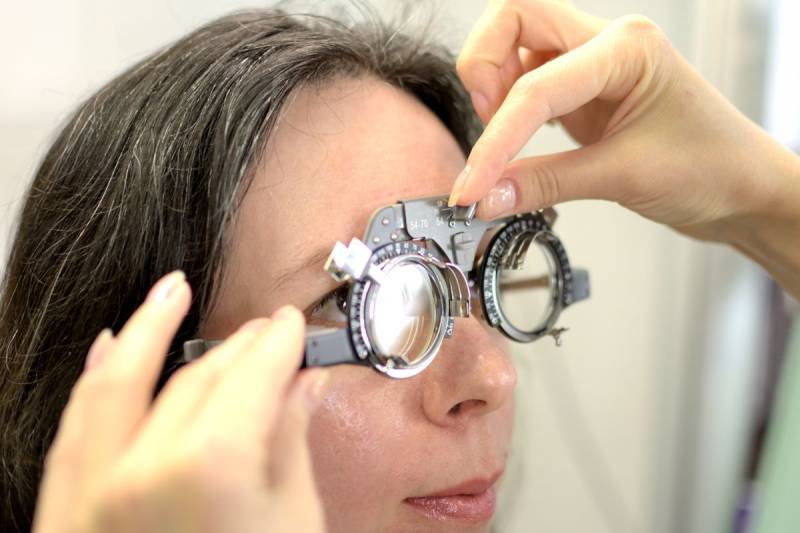 This is a promise this socialist government has made before, during its last legislature, but they never got round to fulfilling it. It seems they’re determined to do so this time, though few specific details are yet known, such as how much each person could have their glasses subsidised or how many people look to benefit from the system.
This is a promise this socialist government has made before, during its last legislature, but they never got round to fulfilling it. It seems they’re determined to do so this time, though few specific details are yet known, such as how much each person could have their glasses subsidised or how many people look to benefit from the system.There’s also no indication of when exactly this will happen. We could be waiting a while as the only timescale they would give is that it will come into force “over the course of the legislature”, so some time within the next four years.
In a move that shocked the nation, Spanish Congress this week voted against the Amnesty Law that President Pedro Sánchez and his Catalan separatist colleagues have been trying so hard to push through.
Last year, the president struck a deal with two Catalan parties to put forward the bill in exchange for parliamentary support for his re-election, but the proposed law has led to staunch opposition from within the government and out.
Nevertheless, it was widely expected to be pushed through but in the end, the party Together for Catalonia (JxCat) voted against the bill, claiming it doesn’t offer sufficient protection for those under investigation for terrorism-related offences.
The bill received only 171 votes, falling short of the necessary majority by five votes. It will now be sent back to a parliamentary committee, which has a month to revise and reintroduce the bill.
The main grievance of the separatists arises from a document compiled by Judge Manuel García-Castellón of the national court, which implies that the Amnesty Law may not shield Mr Puigdemont, former Catalan President, and his associates from facing legal consequences for their alleged role in the activities of “Democratic Tsunami”, a collective of activists who organised a sequence of substantially disruptive demonstrations in 2019.
This result has been a major blow to the already fragile new government of Pedro Sánchez.
Airline passengers are seething this week following a hugely unpopular ruling by the European Court of Justice (ECJ) which has determined that passengers who select an alternative flight when their original flight is delayed will not be eligible for compensation unless they physically present themselves at the airport.
This judgement stemmed from a case involving two German travellers who separately pursued legal action against Ryanair and another airline in German courts.
The upshot is that from now on, passengers who choose an alternative flight instead of attending the airport for the originally scheduled flight cannot claim compensation, as it cannot be demonstrated that they suffered an “irreversible loss of time equal to or in excess of three hours.”
The first ruling concerned a passenger booked on a flight from Düsseldorf to Mallorca. When Lauda Air, a low-cost carrier operated by Ryanair, announced a six-hour delay in take-off, the passenger, identified as WY, booked a different flight to avoid missing a work commitment in Spain.
Critically, he did not arrive at the boarding gate when his initial flight finally departed. Despite the delay exceeding three hours, the traveller sought the standard 250 euros in compensation from the airline.
However, the ECJ denied his claim and emphasised that, moving forward, passengers facing flight delays must still report to the airport and check in.
“It follows that passengers whose flight is affected by a long delay are not exempted from the obligation to present themselves for check-in, unlike passengers whose flight is cancelled and for whom such an exemption is expressly laid down in the Air Passenger Rights Regulation,” the court stated.
There’s never a bad time to follow your dreams, but if your burning ambition is to buy a home in Spain, it’s worth noting that property experts are anticipating an unusual trend in the real estate market this year.
 The Spanish property market has experienced a significant recovery in recent years, driven by a strong economy, low interest rates, and increased demand from foreign investors. However, market analysts expect a significant slowdown in the sale of second-hand homes, at least in the first few months of 2024.
The Spanish property market has experienced a significant recovery in recent years, driven by a strong economy, low interest rates, and increased demand from foreign investors. However, market analysts expect a significant slowdown in the sale of second-hand homes, at least in the first few months of 2024.On the other hand, favourable interest rates, government stimulus measures and a thriving labour market are expected to maintain stability in the sales of new homes.
The main reason for this, according to industry experts, is the increasing difficulty in obtaining mortgages from banks. This development will have less of an impact on new-build buyers, since they are usually clients who can save and later finance, or because they have sold a previous property.
When it comes to cost, new construction prices in Spain are expected to rise gradually, with a predicted increase of around 5% per year. However, the second-hand market is forecasted to see more moderate growth, with price increases of 1-3% annually.
Alicante
 A truly gruesome discovery was made by the National Police in Valencia this week. Officials dismantled an organised crime syndicate accused of stealing corpses from hospitals and residential care facilities and selling them to universities for 1,200 euros each.
A truly gruesome discovery was made by the National Police in Valencia this week. Officials dismantled an organised crime syndicate accused of stealing corpses from hospitals and residential care facilities and selling them to universities for 1,200 euros each.The group’s modus operandi involved targeting vulnerable individuals, including the elderly and foreign nationals without strong social connections, in order to profit from their illegal activities.
The disturbing investigation began early last year when the body of a deceased patient was removed from the morgue of a hospital by a funeral home. Further scrutiny revealed that two employees had forged official records to dupe both the medical facility and the Civil Registry.
Many similar irregularities were discovered, but the case was to take an even more sinister turn. Once the universities had finished their studies, they had to cover the costs of cremation, with the questionable funeral home handling all the arrangements.
Although the business was billing the schools for this service, investigators couldn’t find any record of actual cremations.
In a grisly development, it was found that the criminals stuffed the dismembered stolen corpses into coffins belonging to other deceased individuals, thus cremating several bodies in the one go to save money.
As the gruesome investigation came to a close, police arrested the owners of the funeral home as well as two staff members, who are believed to be the ringleaders.
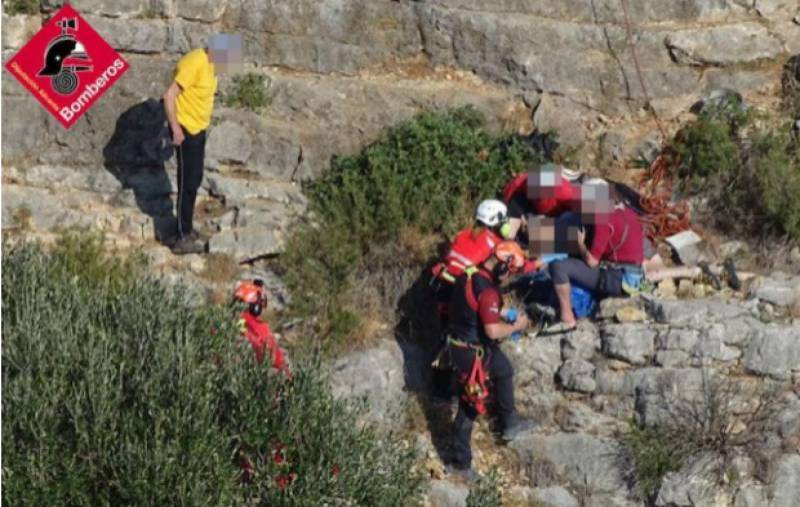 An 80-year-old British climber narrowly escaped death when he fell approximately 30 feet from a cliff edge. The incident took place near the town of Moraira in the province of Alicante.
An 80-year-old British climber narrowly escaped death when he fell approximately 30 feet from a cliff edge. The incident took place near the town of Moraira in the province of Alicante.Rescue workers navigated the difficult terrain to reach the injured pensioner, securing him for transport via air ambulance to Alicante’s Doctor Balmis Hospital.
His current status remains unknown, but he was reported to be in a stable condition prior to being flown to the medical facility.
It is unclear whether the climber was accompanied by others at the time of the fall. Local authorities have launched an investigation into the accident.
With the sun shining and no rain on the horizon, this is the perfect weekend to get out and about, so why not take a step back in time at Orihuela’s famous Medieval street market, which runs from Friday February 2 until Sunday February 4.
This year’s market will feature a new route spanning from the Plaza de Santiago to the Diocesan School of Santo Domingo and will be organised into three distinct zones.
The event promises to delight visitors with a dragon village, the hugely popular birds of prey show and a variety of stalls, entertainment and workshops that are sure to be a hit with the whole family.
See more events like this coming up on our Costa Blanca What’s On and Where to Go Facebook group
Andalucía
We’re still a long way off Easter yet. The Carnival celebrations haven’t even happened. But that isn’t stopping towns, cities and villages across Spain from releasing their Semana Santa Holy Week publicity material already. However, one in particular is causing controversy – the Semana Santa poster for the city of Sevilla.
Seville is known nationwide for the ‘religious fervour’ (in the common Spanish phrase) of its Semana Santa processions. People really feel the passion of the event there, and it’s an amazing spectacle to witness.
Which is probably why so many were up in arms about what they see as the sexualised nature of the image of Jesus Christ on the city’s Easter poster.

Of course, it’s not so unusual to see Jesus depicted half-clothed on the cross. After all, historical sources suggested that’s likely how he was actually put up on the cross. But the good-looking Christ with his almost ‘come hither’ look is what has got people’s backs up. It just doesn’t capture the essence of the Christian values and the tradition of faith normally associated with Holy Week in Seville, they say.
The artist, for his part, has hit back at his detractors. Explaining that he modelled the figure on his own son and his deceased brother, he said, “I intentionally made a young, beautiful Christ, almost without marks of his torture, because what I wanted to represent is the God who is in Christ.”
He even went one further and said that if anyone sees something dirty in the painting it is “his own internal dirt that he is projecting onto the image”.
What do you think of the poster? God in Christ or godless crap?
Of more pressing concern, perhaps, is the ongoing issue of the water shortages in Andalucía. This Monday, the Junta de Andalucía approved its fourth drought decree, under which it has allocated an additional 217.8 million euros to initiate new actions to fight the effects of the region’s drought.
The new measures aim to put into circulation 81 more cubic hectometres of water for consumption via updates to the existing water networks. Plans have also been put in place for drinking water to be brought in by ship to the ports of Algeciras (Cádiz) and Carboneras (Almería) if necessary.
The increase in desalination will also be key, with the expansion of the desalination plant in Marbella to provide more water to the Costa del Sol. Even so, these works will not be completed any time soon and in the short term, the region still stands on the precipice of even worse droughts this summer.
Which begs the question: how much exactly would it have to rain in Málaga to end the drought situation? It’s a tricky question to answer, of course, because there are so many variables to consider and it depends, as the meteorological experts explain, on whether we are talking about recovering ecosystems, the agricultural industry or reservoirs of drinking water.
Still, one egghead from the Málaga Meteorological Center had a stab at it, and estimated that between now and the summer, it would have to rain twice as much as it rains in a normal year. In other words, if the annual average rainfall in the province of Málaga is 647 litres per square metre, we would need almost 1,300 litres per square metre by this summer in order to avoid a drought situation.
Which is another way of saying that it is very unlikely that the drought will be fixed before the summer and the Costa is in for a rough one. Sure, there might be some enormous April storms that dump 300 litres of water on the area for several days in a row, but that’s also not ideal as it would cause flooding and other problems.
Sticking with Málaga, and our final story of the week is that the province’s capital city has rejected plans to introduce a tourist tax.
The mayor (you remember – the one we told you last week was hit by a scooter) categorically ruled out introducing the tax, which would have been about 1 euro per night for tourists staying in the city’s hotels and Airbnbs, until the regional government develops a proper legal framework for the tax that will apply to all areas, something it is slow to do because of the pushback from the tourism sector.
The benefits of a tourist tax, of course, are that it raises extra funds to be able to pay for municipal projects, including those that benefit the tourists themselves, but detractors argue that the extra charges put tourists off coming in the first place. Either way, it’s been confirmed that visitors to Málaga won’t have to pay it any time soon.
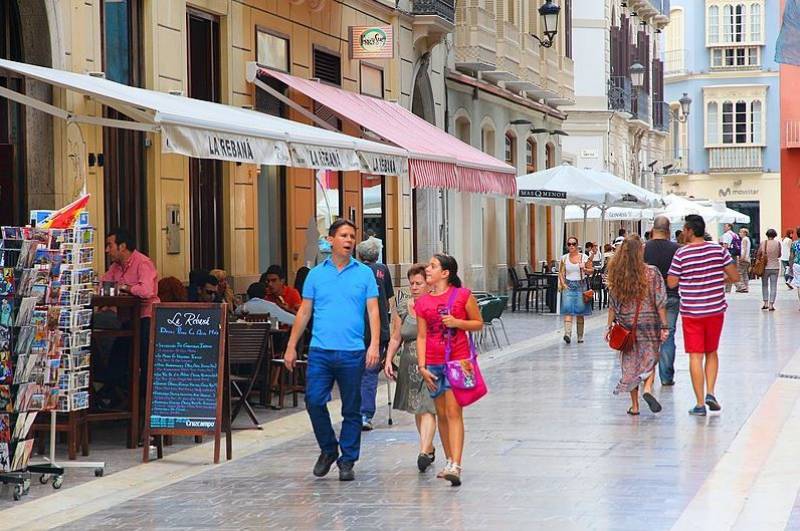
You may have missed…
- Body of dead diver found on La Manga beach.
The lifeless body of a person wearing fins and a wetsuit was found this Thursday morning on the shore of a beach in La Manga del Mar Menor, close to the Monteblanco urbanisation. - Canary Islands deny UK media claim the islands are on the verge of collapse.
British tabloid the Daily Mirror has had its wrists firmly slapped by the government of the Canary Islands, which has very publicly refuted claims by the newspaper that the archipelago is facing “ecological collapse” due to tourist overexploitation. - Spanish council hires a witch to exorcise the city hall.
It has just emerged that the city hall building in Huelva was the scene of a supposed ritual purification or exorcism after several rooms, including the mayor's office, were found by cleaners covered in burned rosemary and smelling strongly of incense. It is not yet known whether public funds were used to finance the ritual. - Spain considers increasing the price of cigarettes in its strategy against smoking.
Spain continues to have one of the lowest prices for tobacco in Europe, with an average pack costing a mere 4.80 euros, but the government wants to increase that as a measure to cut down on the number of smokers. - The Costa Blanca is the top choice for campers in all of Spain.
The latest data proves it – people are loving the Costa Blanca for their camping holidays! Benidorm was the busiest spot in all of Spain for campers and motorhomes in December of last year, with the Valencia destination of Cabanes coming in third.
That’s all for this week. Thanks for reading all the way down to here, and we’ll be back next week.
¡Hasta luego!
Contact Murcia Today: Editorial 000 000 000 /
Office 000 000 000





















